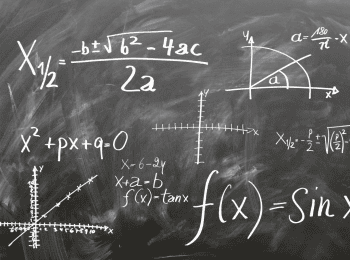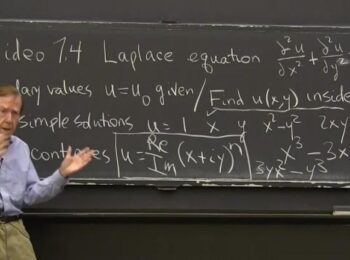A trapezoid, as you’ll recall from geometry, is a shape with two parallel sides. That’s the only definition and the only set of properties that it has. There are special trapezoids, but you might also know them as rectangles or squares. You’ll need to be able to determine the area of a trapezoid in various studies like geometry and calculus, as well as use it in practical applications.
For starts, the area of a trapezoid is helpful in calculus when getting the approximation for integrals, assuming you don’t want to go through the trouble of taking integrals directly and can just provide a rough approximation. There are several things you can do when faced with trapezoid calc: find A math problems.
What is Area?
Area is nothing but the space outlined by a two-dimensional shape, expressed in square units, such as in2 or cm2. Multiplying the length by the width provides you with this information for simple quadrilaterals, but it doesn’t work as well with trapezoids. Therefore, you have to be a little creative and be diligent about separating your trapezoid into other shapes.
Here’s what you need to find a trapezoid’s area:
Dividing Up a Trapezoid
The simplest form of an area is length times width, but this only works for quadrilaterals like squares or rectangles whose sides all make right angles. A trapezoid can be thought of as a rectangle with a triangle attached to either side, so you’ll have to find the area of each of these sections separately.
The formula for the area of a triangle is ½ bh, where b is the base and h is the height. Therefore, if you know the extra length that isn’t a part of the basic quadrilateral, as well as the height, you can easily calculate the area of the trapezoid by adding each section.
Let’s start with a simple example. Assume that you have a trapezoid ABCD with all known lengths. AB, the top line, is 5 units long, and CD the bottom line, is 8 units long.
You also know that the height is 3 units.
To start, take the basic area of the quadrilateral in the form of 5 * 4, or 20 square units. Then you’ll have to take the areas of the two triangles. Unlike with perimeter, you don’t need to know the length of the hypotenuse. All you need is that extra length and the height. Because the total is 8 and the part you’ve already calculated is 5, you have 3 units left over.
Multiply 3 by 4 to get 12, then divide by 2 to get an area of 6. Multiply by 2 to account for both sides, leaving you with 12 square units, and adding this measurement to the 20 square unit you calculated earlier leaves you with a final answer of 32 square units.
What if You’re Missing Sides?
If you’re missing a side measurement, it makes it harder to complete a trapezoid calc: find A operation, but not impossible. You’ll usually have at least one angle, and if you have an angle, you can find sides using the Law of Sines. You’ll also have at least one or two sides. It’s rare to impossible that you’ll be asked to solve a trapezoid with no measurements.
This is a simple ratio: a/sin(A) = b/sin(B) = c/sin(C)
Now because your basic part of the trapezoid is a quadrilateral, you already know that the rest of it is composed of right triangles. Let’s also assume you have a hypotenuse, side c, of 5. As such, you know that one of your angles is already accounted for. Therefore, a/sin(A) = b/sin(B) = c/sin(90). The sine of a 90-degree angle is 1.
Now, let’s assume that b, your base side, is 10 units. So, you can now put that in as well and cross- multiply: 10/sin(B) = 5. Simplifying the equation gives you 2/sin(B) = 1, or sin(B) = ½, or 30.
Plug 30 into (B) to continue with the equation to have your other value present. Also, remember from geometry that all three angles of any triangle add up to 180 degrees. Therefore, you can subtract and figure out that your missing angle is 30 degrees.
By using the Law of Sines, assuming you have a known side (it’s rare that you’ll have all sides or all angles missing), you can then take the sines of the angles you have, cross-multiply, and simplify.
Once you do that, you can take the side of the base of the triangle and the height and use those two measurements to calculate area as you normally would: ½(bh). Do this for both sides, add them, and then add the rest to the quadrilateral base. You should have this in your formula; if you don’t, it may not be possible to solve for the area of a trapezoid.
Applications
Now we can get into a slightly tricker subject: using the area of a trapezoid on a graph, such as you would do when approximating integrals. Your first step is to decide how thin you want the trapezoid to be on the graph. The more you have, the more closely you can approximate the area under the curve. For simplicity, try starting with slices with a width of 1.
This corresponds to a change of 1 for x on the graph, so this should make it easy to calculate.
Using the relevant function, such as 2x + 3, use x to find the appropriate values of y In this case, if you start at x = 1, you’ll have the vertices (0, 0), (3, 0), (0, 3), and (3, 7).
In a way, this makes it simpler to calculate because you have the points plotted out and can, therefore, find your lengths. You have an imaginary line traveling across the graph at y = 3, dividing your trapezoid into a quadrilateral and a right triangle. You should have 3 increments of x and 4 for y.
As always, you’ll find your base area first. Then find the dimensions of your triangle and find its area. Then, just add the two numbers.
How is This Useful?
If we take multiple trapezoidal segments of an integral, calculate all their areas, then add them together, we can easily approximate the area under the integral without having to go through the steps of doing derivatives and solving regarding calculus.
This sort of function has many applications in science, such as determining the total volume of liquid given a certain rate of flow over time. Of course, all this works only when the value for y is not at or below zero, at least as far as practical applications are concerned. Few, if any, practical applications use negative numbers.
Trapezoid calc: find A Another Method to Find Area
Another way that you can do trapezoid calc: find A equations is to use the formula [(b1 + b2)/2]h, where you take the average of the two bases and then multiply by the height. However, this requires you to know the bases, which isn’t always possible. If you know both of them, you can use this formula. If you only know one, you’ll use the alternate method; that is, sectioning it.
Visualizing
If you use the basic formula for the area of a trapezoid [(b1 + b2)/2]h, you’ll need to do a little visual tweaking. Functions travel along the x-axis of a graph, meaning that the trapezoids used to approximate them are sideways. In this case, you need to envision the graph as being sideways. The height of the trapezoid, in this case, lies parallel to the x-axis.
Meanwhile, the bases are vertical. Even though it looks vice-versa, don’t let it throw off your formula. You’re essentially treating the trapezoid as a rectangle with distorted sides.
Irrational Area Measurements
Some of the example problems we’ve covered have side measurements that work out to neat and clean integers. This isn’t always going to be the case. Because you’re dealing with the Pythagorean theorem to find the measurements of a right triangle, you’re likely going to have to deal with square roots that don’t simplify. An example is √6. You cannot simplify it any further.
Something like √12, however, can be reduced to √4 * √3, or 2√3. If you see a number like this, keep it as is unless your instructor specifically asks you to use a calculator and round to 3 or 4 decimal places. Because these square roots are irrational, you won’t get an exact match if you try to check your work. You might get something like 2.9998.
Final Thoughts
Before you start with your trapezoid calc: find A work, take a look at the problem and determine what data is present and what you need to find. This will help you determine which method you need to use to find the shape’s total area. Many times, you’ll be able to use the basic trapezoid formula. If you don’t have all the data, you’ll need to split the shape into pieces.
The video may take a few seconds to load.
Having trouble Viewing Video content? Some browsers do not support this version – Try a different browser.






